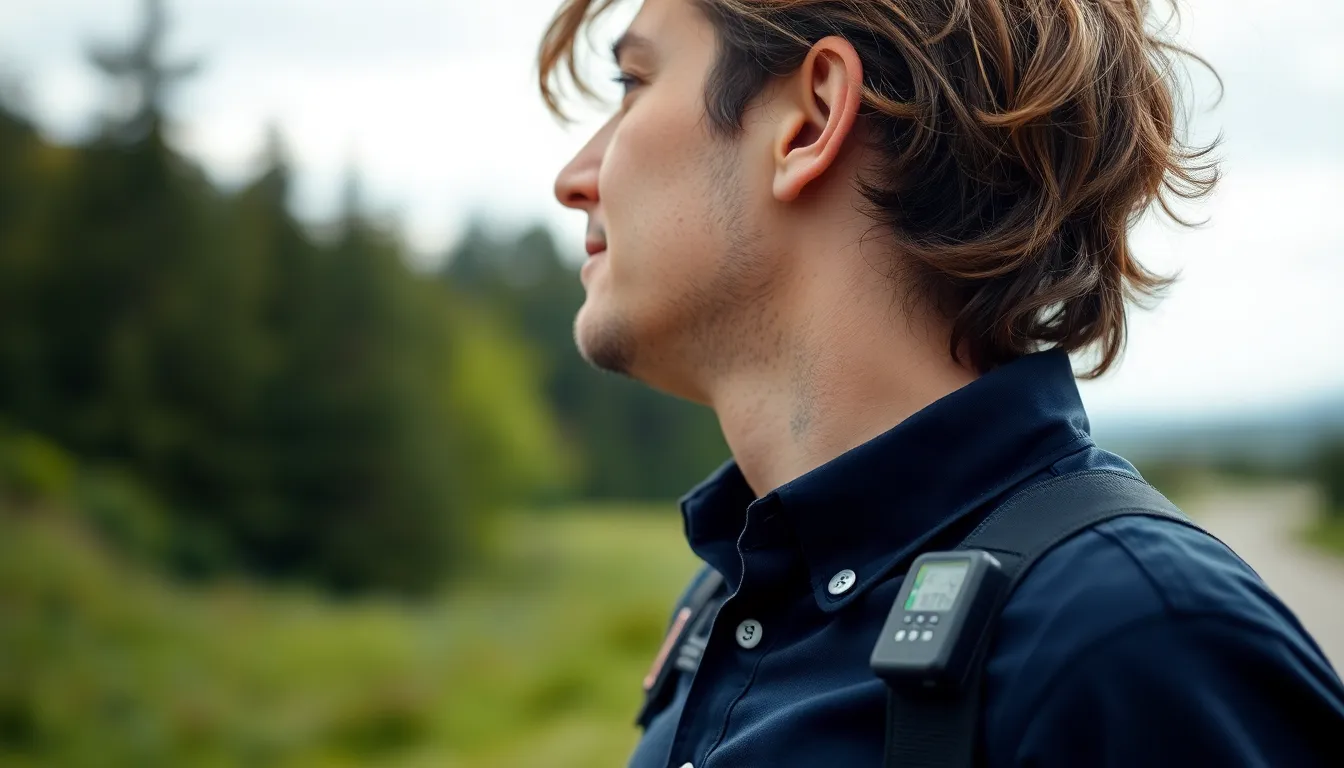In a world where everyone seems to have a smartphone glued to their hand, wouldn’t it be cool to capture life’s most spontaneous moments without raising an eyebrow? Enter the wearable hidden camera—a gadget that’s more discreet than a ninja and just as effective. Whether it’s for documenting a wild adventure or simply keeping an eye on your mischievous pet, these cameras blend seamlessly into everyday life.
Imagine strolling through a park, capturing the antics of a squirrel stealing someone’s sandwich, all while looking like you’re just rocking a stylish accessory. With technology evolving faster than a cheetah on roller skates, these cameras are compact, high-quality, and ready to roll. So, if you’re ready to elevate your storytelling game and add a dash of intrigue to your daily routine, it’s time to explore the world of wearable hidden cameras.
Table of Contents
ToggleOverview Of Wearable Hidden Cameras
Wearable hidden cameras offer innovative solutions for discreet recording. Simple designs make these devices easy to integrate into daily life. Common choices include body-mounted cameras, glasses with built-in lenses, and accessories like hats or watches. Each option allows users to capture high-quality footage without attracting attention.
These cameras serve multiple purposes. Documenting adventures becomes seamless whether hiking, biking, or exploring urban environments. Monitoring pets while away from home provides peace of mind for pet owners. Parents find wearable cameras useful for keeping an eye on children during outings.
Outstanding features enhance the appeal of wearable hidden cameras. Many models include high-definition video recording capabilities, providing crystal-clear images. Some devices offer extended battery life, enabling longer recording sessions. Connectivity options, such as Wi-Fi, allow users to stream footage instantly or transfer files to smartphones.
Safety and privacy concerns arise with hidden camera usage. Laws vary globally regarding recording in public versus private spaces. Users must remain aware of these regulations to avoid legal issues. Proper usage enhances their value as tools for personal documentation or security.
With advancements in technology, wearable hidden cameras continue to evolve. They become smaller and more efficient, making them accessible and more useful. Those considering these gadgets can find a range of options tailored to specific needs, from casual users to professionals. Each choice balances quality, size, and functionality effectively.
Key Features To Consider


Wearable hidden cameras come with various features that significantly enhance their usability. Awareness of these key aspects ensures users make informed decisions.
Video Quality
Video quality remains crucial for capturing clear and detailed footage. High-definition options, such as 1080p or 4K resolution, provide sharp images ensuring that each moment is easily identifiable. Users should prioritize cameras equipped with strong sensors, enabling superior low-light performance. This feature proves especially valuable in dimly lit environments, where other devices might fail. Additionally, stabilization technology can prevent shaky recordings, further enhancing visual clarity.
Battery Life
Battery life directly impacts the usability of wearable hidden cameras. Many models offer extended battery life, ranging from 4 to 12 hours on a single charge. Devices with fast-charging capabilities allow for quick top-ups between uses, making them convenient for on-the-go scenarios. Users should consider removable batteries for longer outings, as they allow quick swaps without downtime. The recording mode selected can also influence battery performance, with continuous recording draining power faster than motion-activated options.
Storage Capacity
Storage capacity plays a vital role in ensuring ample recording time. Various cameras support microSD cards, allowing users to expand storage as needed. Options typically range from 32GB to 256GB, accommodating numerous hours of footage. Depending on video resolution, higher capacities can become necessary to avoid interruptions. Users should assess how much storage is required for their intended applications, as higher resolution recordings consume more space. Some models also provide cloud storage options, enabling easy access to footage anytime.
Types Of Wearable Hidden Cameras
Wearable hidden cameras come in several distinct types, each serving unique purposes. They offer innovative solutions for discreet recording in various situations.
Clothing Accessories
Clothing accessories represent a popular category of wearable hidden cameras. Items like ties, shirts, and jackets may feature concealed cameras, allowing for seamless integration into outfits. Users can capture video without raising suspicion, making these accessories ideal for professionals needing to document interactions discreetly. Furthermore, some garments include pockets specifically designed for housing cameras securely. These clothing-based options combine functionality with style, ensuring users can maintain their appearance while gathering footage.
Wearable Tech Devices
Wearable tech devices expand the variety of hidden cameras available. Smartwatches with built-in recording capabilities allow users to capture footage while monitoring notifications and fitness activity. Glasses equipped with cameras provide another discreet choice for recording hands-free. Many wearable tech options offer compatibility with smartphones, enabling remote access to live feeds or stored footage. These devices emphasize versatility, appealing to individuals seeking solutions that blend technology with everyday wear. Each offers a unique approach to discreet observation, catering to diverse needs and preferences.
Use Cases For Wearable Hidden Cameras
Wearable hidden cameras provide numerous applications across personal safety and surveillance sectors. These discreet devices serve various needs, enhancing safety and security in everyday situations.
Personal Safety
Wearable hidden cameras enhance personal safety by capturing evidence in potentially dangerous situations. Individuals can discreetly record interactions, providing protection against harassment or aggression. Using these cameras during solo travels or outdoor adventures adds an extra layer of security. They also offer a way to document incidents, which can aid law enforcement during investigations. With easy integration into clothing or accessories, users can maintain vigilance without drawing attention. Overall, these devices empower users to feel secure while navigating their environment.
Surveillance and Security
For surveillance and security, wearable hidden cameras play a vital role in monitoring premises. Businesses can utilize them for employee safety, discreetly recording interactions within workplaces. These cameras are particularly useful in retail settings, where they can deter theft and document suspicious behavior. Homeowners sometimes use them to oversee their properties, ensuring that security measures are in place. They often provide high-definition video, allowing for clear footage in various lighting conditions. As regulatory compliance in surveillance remains essential, users must adhere to local laws regarding recording in public or private spaces.
Legal Considerations
Wearable hidden cameras offer unique benefits, but they raise significant legal concerns. The legality of using these devices varies widely across jurisdictions. Generally, recording in public spaces is permissible, provided there’s no expectation of privacy. Users often face stricter regulations when recording individuals in private settings, such as homes or businesses.
Privacy laws significantly impact how wearable cameras can be used. Many states require consent from all parties involved in a conversation before recording. Violating these laws can result in criminal charges or civil penalties. Understanding local laws is essential, as they dictate whether recording is legal.
Intent behind the recording also matters in legal contexts. Documenting an event for personal use typically differs from using footage for commercial purposes. Commercial use often requires different permissions and may involve additional legal obligations.
Businesses using wearable hidden cameras for employee monitoring should consider employment laws. Employees often have a right to know about surveillance, and failure to disclose it could lead to legal issues. Transparency helps maintain trust and ensures compliance with labor laws.
Consulting with a legal professional before utilizing wearable hidden cameras adds an extra layer of security for users. Expert guidance can clarify the complexities surrounding consent, privacy laws, and permissible uses. Taking this step minimizes risks associated with inadvertently breaking the law.
Overall, being aware of and understanding legal considerations is crucial for anyone using wearable hidden cameras. Legal frameworks can change, so staying informed about current regulations ensures responsible and compliant usage.






